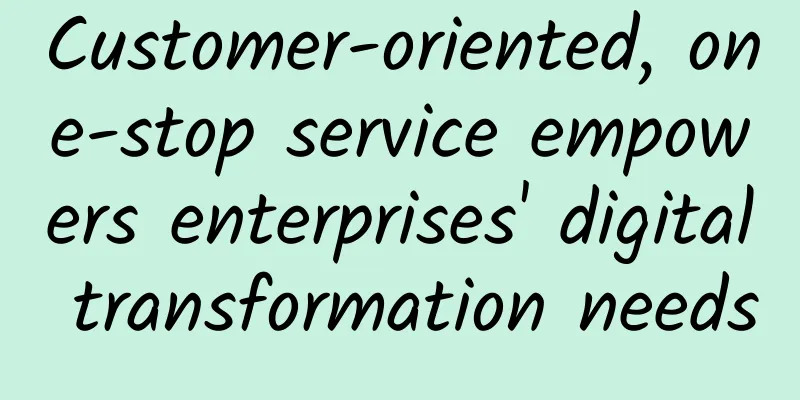Network Experts: 5 best practices for successful IPv6 migration

|
Today, the online world is slowly transitioning to the IPv6 standard. According to Google, about 15% of global Internet traffic used the IPv6 protocol in 2016. By the end of 2017, about 20% of Internet traffic used the new protocol, and by 2019, the traffic using the new protocol may rise to 35%. But most IPv6 traffic does not come from enterprises. "I think a lot of companies are still in the early stages of figuring out what they're doing with network protocols," said Ed Horley, co-chair of the California IPv6 Working Group. He noted that while service providers are being forced to move to IPv6 due to the exhaustion of IPv4 addresses, enterprises are not under such pressure. "The challenge with IPv6 is that there is no clear economic benefit or reward for enterprises to adopt a new protocol standard," Horley said.
So why should enterprises migrate to the IPv6 standard? Network expert Jeff Carrell said he believes there are both internal and external factors in migrating to IPv6. Carrell explained: “Within the enterprise, most modern operating systems already run with IPv6 enabled by default, and IT teams can run into issues if they don’t ensure and support the protocol by default running on their users’ operating systems. From an external perspective, the problem is that much of the world, especially mobile devices and IoT traffic, is running over IPv6. "More and more entities around the world can only get IPv6 connectivity, and your forward-looking content may be important to these users," Carrell said. Horley said it comes down to a simple question: "Do you want to be part of the Internet?" He added, "If organizations want to do business on the Internet, they need to have a way to interface with IPv6." Horley and Carrell recommend five key best practices for organizations that decide to migrate to the new standard: 1. Train IT staff on IPv6 "Some fundamental components of the IPv6 standard are completely different from IPv4," Carrell said. "IT teams need to do their homework to understand the new protocol and how it will impact infrastructure and applications." Both Carrell and Horley said IPv6 training should extend beyond the network team to IT staff. "You should be training everyone across the board, educating and training them on what's going on," Horley said. 2. Analyze your organization’s current infrastructure and applications Organizations also need to assess the IPv6 readiness of their existing environments. "You need to look at the overall infrastructure of your network environment, not just the switches, routers, network cards, and operating systems, but all the devices that support IPv6," Carrell said. He warned that an organization's legacy systems and applications may partially or completely support the new protocol. 3. Set up a test environment Carrell also recommends that organizations set up a "test lab that simulates the organization's basic operations." Staff can enable IPv6 in that test environment and see what happens. He noted that IPv6 can sometimes cause unexpected problems with applications or hardware. 4. Write an IPv6 plan Based on what they learn from training, evaluation, and testing, organizations can plan how to roll out new protocols in their own environments. Horley noted that this planning process can also present a unique opportunity for organizations to reconfigure their IT environments. "I think the biggest mistake I see people making at this early stage is that they are evaluating and figuring out where they want to go, without taking advantage of the unique opportunity that v6 presents to change or redesign what they already have, whether that's taking advantage of the new networking capabilities that IPv6 provides, or just an opportunity to structurally change the way the network operates to better meet the business needs of the organization," he said. 5. Phased rollout of IPv6 Carrell said organizations should "do it in small batches in a place where it's easier to manage" when rolling out IPv6 in production. A phased rollout makes it easier to handle any issues that arise. Horley encouraged companies that are just beginning the IPv6 migration process: "It's not as painful as people think it is. It's not as daunting as it should be." |
<<: Seven storage mistakes data centers make during consolidation
Recommend
Inventory | 7 major acquisitions in the cybersecurity field recently
Cybersecurity is more important today than ever b...
Megalayer: US CN2 line VPS annual payment 159 yuan, Hong Kong VPS annual payment from 199 yuan
Megalayer is a hosting provider founded in 2019 a...
5G: The need for better security
5G is 100 times faster than today’s mobile 4G, an...
When the 2G/3G network is down, will your IoT work properly?
Over the past few years, we’ve seen a lot of head...
Fixed-line broadband rates drop again, how should operators respond?
This year marks the sixth year of the implementat...
We need to look up to the stars (6G) and keep our feet on the ground (5G)
[[349140]] 2020 is coming to an end. With the adv...
Knowledge points of wireless network coverage system
1. What is AP? Answer: AP - Wireless Access Point...
HTTP 2.0 Interview Pass: Mandatory Caching and Negotiated Caching
[[413787]] This article is reprinted from WeChat p...
Impact of 5G Networks on Fiber Cabling Requirements
By Kara Mullaley, Corning Inc. [[394802]] 5G netw...
5G has been developed for three years, why are people still using 4G?
I remember that in 2018, there was a lot of news ...
Analysis of global 5G infrastructure market development trends from 2020 to 2027
Market research firm Grand View Research recently...
Special price for standard interconnected bare metal servers: 8 cores, 32G memory, 500GB SSD, 100M bandwidth, starting from RMB 200 per month
Standard Interconnect is currently promoting bare...
The 5G digital era is coming. Recognize these 3 trends: seize new opportunities
Market development and technological progress com...
Interpretation: Why is 5G industry application so tepid? It requires full participation from all parties
Although the top leadership has once again clarif...









